#like stories with big mysterious slight dark academia houses
Text
So far Blackmoor Manor is still the top Nancy game for both my sister and I. Other games have better characters I think and even better plots maybe, (or better culprit reveals) but the vibes and music are STRONG. (Both TRT and CUR made us feel nostalgic for the game even though we never played it before. But like, it felt like to both of us as if we had memories of playing it before it was magic)
I think being fans of the Secret Garden and stuff like that as a kid is why we like that vibe so much.
I’ve always wanted to explore a giant old mysterious house. Books like that and even the beginning part of the lion the witch and the wardrobe make it seem so fun.
Also loulou. Love loulou so much.
#like stories with big mysterious slight dark academia houses#is our VIBE#we had these audio drama sets with Anne of green gables little women and the secret garden#and we listened to the secret garden the most#nancy drew pc games#curse of blackmoor manor#CUR#the secret garden#also LOVE the soundtrack to the secret garden musical it’s perfect#I even did some concept art for it for one of my college projects#may post some stuff from that sometime#her interactive#clue crew#narnia#lww
17 notes
·
View notes
Text
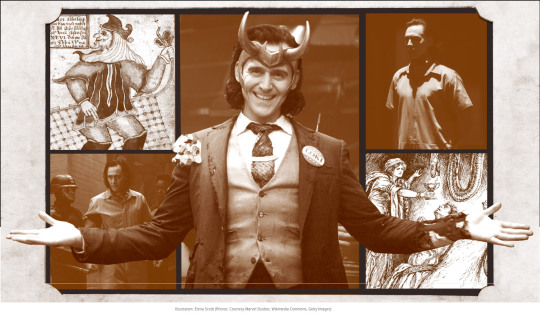
How Loki Shapeshifted From Nordic Folklore to a Marvel Icon
by Sara Durn
There are more than 800 years between the stories of Viking god Loki first being written down and his arrival (in the superb Tom Hiddleston) in the Marvel cinematic universe in 2011’s Thor. The new Disney+ series Loki, set to be released on June 9, is primed to explore more antics of Thor’s trickster brother as he attempts to fix the timeline he helped break in Avengers: Endgame. Among his many talents, Loki has cheated death a few times in the MCU, but that amounts to child’s play for this god.
In Norse mythology, Loki causes just as much confusion as his Marvel iteration. Though there aren’t any stories of him outwitting death, there are plenty of myths where he shapeshifts, swaps genders, or tricks gods into killing other gods. In the Marvel universe, he’s quite prone to allegiance swapping. Let’s dig into this troublemaker’s journey.
What is Loki’s origin?
The legends surrounding the Norse god are first documented in writing around the 13th century, primarily in Iceland. There are two versions of these legends that enter the historical record around the same time—the Poetic Edda and the Prose Edda. The Poetic Edda is an anonymous collection of Old Norse poems that are mainly pulled from an Icelandic medieval manuscript known as the Codex Regius (some of the poems date back to 800 CE). The Prose Edda is an Old Norse textbook for composing poetry that was written by a single author, Snorri Sturluson, a colorful Icelandic historian, scholar, and lawspeaker.
“Within the myths, you can see Loki moving from being just mischievous to being absolutely evil. If you think of him as only being mischievous, he’s actually a creative force and often ends up getting the gods much of their magical possessions, like Thor’s Hammer, through his cunning.”
“Pretty much everything we know about Loki came from Snorri Sturluson,” Viking scholar Nancy Marie Brown, author of Song of the Vikings: Snorri and the Making of Norse Myths, told io9. Brown says this was very appropriate given that “Snorri was quite a trickster figure himself.” While calling him the “Homer of the North,” Brown also acknowledges that Snorri spent a lifetime “double-crossing friends and family… scheming and plotting, blustering and fleeing”— a life that eventually led to his unheroic demise in a nightshirt where his (supposed) final words were “don’t strike!” In both Eddas, Loki is always portrayed as a cunning trickster. In the Prose Edda, Snorri describes Loki as “pleasing and handsome in appearance, evil in character, very capricious in behavior. He possessed to a greater degree than other [gods] the kind of learning that is called cunning.”
Besides appearances, Loki is always getting the gods into trouble and then cleverly extricating them from the mess he’s made. He fathers the Midgard Serpent destined to bring about Ragnarök, the end of the world in Norse mythology. He convinces the blind god Hodr to kill the beautiful and favored god Baldur. He kidnaps the goddess Idun to save his own hide from a furious giant. The mythological character is constantly switching sides—sometimes supporting the gods and sometimes their enemies, the giants. In the MCU, Loki is both hero and villain—in The Avengers he opened a wormhole in New York City releasing alien monsters and in Thor: Ragnarok he helped Thor save the Asgardians from Hela’s wrath.
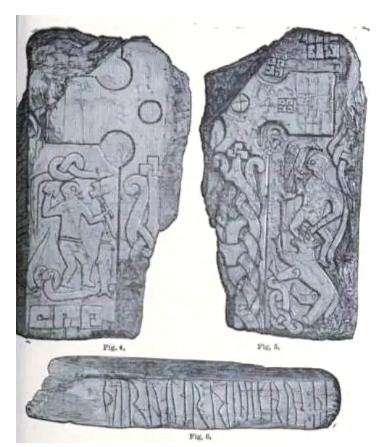
Thorwald’s Cross, a fragmented runestone depicting Odin being consumed. Image: Public Domain
Loki might have begun as a Norse god of fire—fitting considering how fire can be both “helpful and destructive,” said Brown. Fire can both burn down your house and cook you dinner. It’s tricky that way—like Loki. As Brown puts it, “You can see his two sides there [reflected in fire].” Brown also explains that there was likely a transformation in Loki over the centuries. “Within the myths, you can see Loki moving from being just mischievous to being absolutely evil. If you think of him as only being mischievous, he’s actually a creative force and often ends up getting the gods much of their magical possessions, like Thor’s Hammer, through his cunning.” Again, it’s just like Marvel’s Loki, who sometimes helps the other gods out, like when he teamed up with Thor to escape the Grandmaster in Thor: Ragnarok.
What is Loki’s relationship with the Devil?
In the long, slow conversion of the Vikings to Christianity that took place between the 9th and 12th centuries, Loki became a parallel to the Christian Devil. The creative, positive elements of him fell away leaving only the god favored by the Father (Odin/God) before getting cast out. (It does sound a bit like Lucifer, right?) Christianity paints a world that is far more black and white, good vs. evil than the Norse pagan religion—here’s little room for a grey, ambiguous figure like Loki. As Brown puts it, “The Christian religion insists that you’re either with us or against us. Whereas in what we understand of the pagan Viking religion, there were a lot of shades of grey. There was a spectrum on which you could move back and forth. You weren’t all one thing or all the other. You weren’t all female or all male. You weren’t all good or all evil. It was more human.”
Loki always moved fluidly between those two polarities—helping Thor in one story, causing an overthrow of the gods in another. In one tale, Loki shapeshifts into a mare, becoming the mother of Odin’s great 8-legged horse, Sleipnir. In another, he fathers the wolf Fenrir. The Church couldn’t really handle all that grey area Loki liked to inhabit, and so it eventually cast him as the devil himself. “[Monks] had to sort the gods into saints and devils, and Loki by being sexually ambiguous and also morally ambiguous falls into the devil [category],” explained Brown. Though Marvel’s Loki certainly channels a bit of the devil at times, we’ve luckily yet to see him become both mother and father to world-ending, multi-legged monsters in the Marvel Universe. But, there’s still time, especially with the new Disney+ series hitting the small screen.
When was Loki’s Revival?
After the Viking conversion, the Norse myths started to fade, and Loki with them—until the 1600s, when medieval manuscripts like those containing the Prose and Poetic Edda began to be translated. “The reason [these myths] became popular was because of nationalism,” Brown told us. “In the mid to late 1800s, there was the idea that what distinguished one nation from another was its cultural heritage.” This spurred Jacob Ludwig Karl Grimm and Wilhelm Carl Grimm—known to many simply as the Brothers Grimm—to go “collect the stories of the local people to prove that Germany was a nation, not a collection of states. You had the same thing happening in Ireland to prove that they were different from the English and you have the same thing happening in Iceland, Norway, Sweden, and Denmark.” This eventually gave rise to the Nazis appropriating Norse myths in their twisted pursuit of alleging Aryan supremacy.
Following the Civil War, the United States also looked to the Middle Ages to redefine the country’s fractured identity. As Chris Bishop, author of Medievalist Comics and the American Century, explained to io9, “[the Middle Ages] offered an aesthetic that was individualistic (think: the knight errant, Robin Hood, etc.), given to interpretations of exceptionalism (Camelot, the once and future king), venerable (where old equalled established and respectable), and (unlike Classicism) Christian.” The Middle Ages, or more accurately the remixing of the Middle Ages known in academia as “medievalisms,” appealed to many Americans obsessed with ideas of American exceptionalism and singularity in the 19th century. Eventually the U.S.’s obsession with the Middle Ages made its way into comic books starting with Prince Valiant in 1937, a comic strip created by Hal Foster set in and around the legends of King Arthur. Other medievalist comics followed eventually leading to the inclusion of Norse gods like Loki, Thor, and Odin.
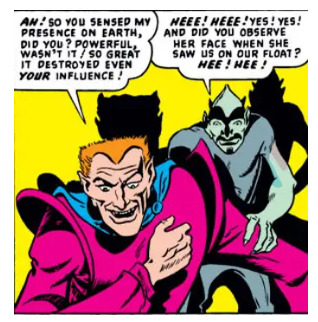
First appearance of Loki in the 1949 Venus comics. Image: Wikicommons
When was Marvel Comics’ Loki introduced?
While Loki first appeared in the 1949 comic book Venus styled after (you guessed it) the devil, the modern-age Loki didn’t hit the comic book scene until co-writers and brothers Stan Lee and Larry Lieber adapted him in 1962’s Journey into Mystery #85. It’s in that issue where Loki “becomes Thor’s enemy/ally/brother/adopted brother/etc,” said Bishop. The mischievous personality of the Norse god remains largely the same in the Loki of the comic books and films and even retains the ability to swap genders at times.
In the comics, Loki is raised as Thor’s brother in Asgard—somewhere the Marvel stories diverge from the Norse mythology. It’s Loki and Odin who are sworn brothers in the Norse myths, not Loki and Thor. As Brown explains, “Loki and Odin are blood brothers, which means they are even closer than real brothers.” In the Viking world, two people who swore a blood oath to one another formed a bond that went beyond kin, and so went the Norse Loki and Odin’s relationship. As Bishop points out, the Loki/Thor dynamic of the comics and movies is a “classic, formulaic archetype.” Thor is the “big, hunky, handsome (but slightly dumb) hero” and Loki is “his slight, quirky but super-smart frenemy. Loki is the dark, misunderstood, vulnerable shadow that audiences can relate to, reach out to, care for. Thor is that dumb jock who everyone looked up to at school, but Loki was that cool, quiet kid who went on to found a tech-empire.”
Why is Loki called a Trickster?
What does remain consistent with Loki is that he always plays the trickster. He is the manifestation of psychologist Carl Jung’s archetype: The trickster disrupts the individual and/or society causing either growth or destruction. Social scientist Helena Bassil-Morozow points out that when it comes to Loki, “despite the fact that the narrative details between the medieval Loki stories and their contemporary versions vary, the main idea remains the same—the trickster mercilessly attacks those in power and nearly causes the end of the world.” Both in the Norse myths and in Marvel, the world needs saving from Loki. He acts as the catalyst for a whole lot of upheaval—upheaval that in the Norse myths causes Ragnarök.
Loki “functions as a locus of salvation (literally, a prodigal son).” Loki just might be a savior. He’s someone audiences can look at and think “if Loki can be redeemed, so too might I.”
Perhaps that’s where the two narratives differ the most. In the Norse tales, the end of the world at Ragnarök is inevitable. Odin and Thor will die. Everything will change. Vikings lived with the knowledge that their world would end. In the MCU, we don’t know how the story ends, plus Ragnarök took place already and yet the Asgardians live on. There’s still hope that Loki will prove to be good and that the other superheroes will save the world from whatever mayhem he’s caused, or so we can hope in the upcoming Disney+ series. As Bishop puts it, Loki “functions as a locus of salvation (literally, a prodigal son).” Loki just might be a savior. He’s someone audiences can look at and think “if Loki can be redeemed, so too might I,” explains Bishop.
While the Vikings’ Loki caused the end of the world, today’s Loki might just save it. Or maybe not. And, perhaps that’s the fun of the trickster—you never quite know what they’ll get up to.
75 notes
·
View notes
Text
Alex Recommends: March Books
Well, I can safely say that I have had a very tricky, stressful and tiring month. Particularly over the last couple of weeks, my freelance work has been busier than ever. It’s great from a financial point of view (although I’d still like to earn more!) but it has meant that I’ve been working some quite crazy hours. This has resulted in a few migraines and anxiety attacks that I could have done without but I’m lucky that I have Mark to cuddle when things get too bad.
I think I’m so tired of this lockdown nonsense now. I really miss being able to see the people I love whenever I want to. In fact, I’m even getting a little bit worried about how I’ll cope when big gatherings start again. Going straight from spending all day every day in one house to being surrounded by people and noise again might be a bit overwhelming. I’m sure I’ll get used to it eventually but I know that will take a while to ease back into.
I have read a lot this month and it has been a nice variety too. There are some fantastic books coming our way in April and I can’t wait to get reviews up for them. I hope you’re all doing ok and still managing to stay safe! -Love, Alex x
FICTION: The Divines by Ellie Eaton.
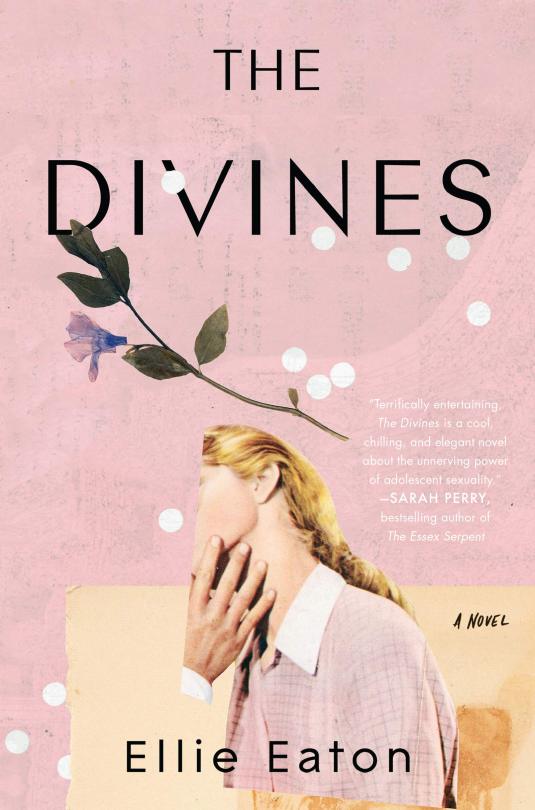
At the elite boarding school, St John the Divine, the Divines were known for being sassy, confident and popular. 20 years later, Sephine now lives in LA with her handsome husband and she hasn’t revisited her past for years. But on a brief visit to the school while on honeymoon, memories of her eventful final days as a Divine re-surface. The Divines has a slight dark academia feel to it in the vein of The Secret History or Heathers. It deals with typical teen girl clique issues in a rather chilling manner with class clashes also at play. I found that I kept turning the pages and became thoroughly absorbed in this unsettling, nostalgic haze of a novel.
NON-FICTION: Group by Christie Tate.
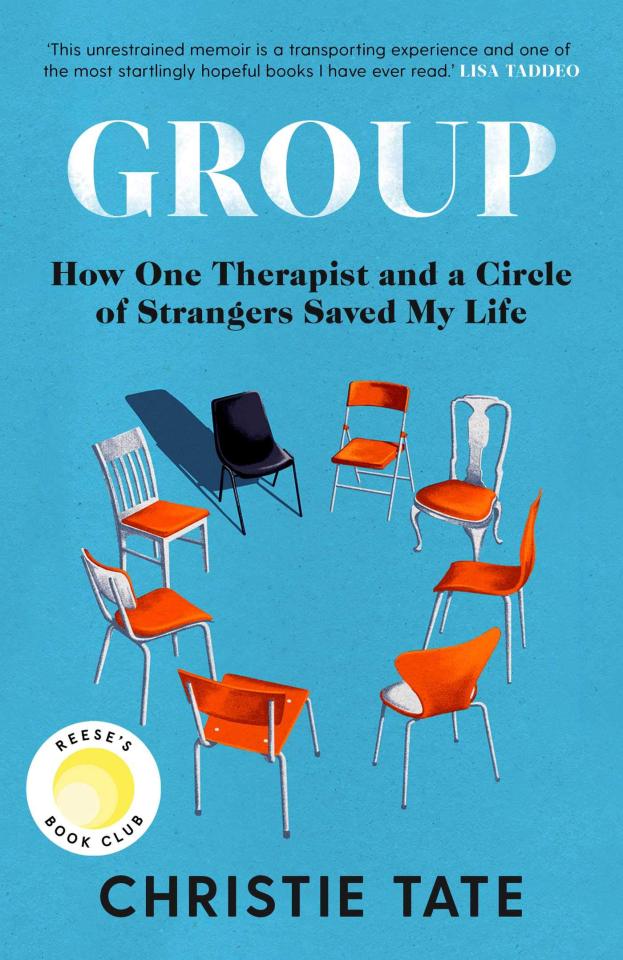
Despite being in recovery for bulimia and coming top of her law class, Christie Tate still fantasises about dying on a regular basis. So, she begins visiting Dr Rosen, an eccentric therapist who assures her that one of his groups is exactly what Christie needs. This honest, witty memoir celebrates the unique bonds that are formed within a therapy group between members and their therapist. Having some experience of this myself, I can certainly testify as to the one-of-a-kind relationships that are built through therapy groups. When everyone in the circle is completely open about the darkest parts of their souls, how can those special connections not happen? Group explores the rollercoaster that is therapy in a very funny, relatable voice.
MIDDLE-GRADE: The Weather Weaver by Tamsin Mori.

Stella is back on Shetland to stay with her grandfather while her parents are working away. But now that her grandmother has gone, her grandfather seems distant and the island is nothing like she remembers. Then she meets a mysterious old woman named Tamar, who can apparently control the weather. This is a lovely, whimsical tale which weaves a sweet family story in with a unique magic system. Stella is a very plucky protagonist and the ethereal nature of the island fitted the book perfectly. I loved the mythological elements and had never realised that clouds could be so cute!
YA: Mina and the Undead by Amy McCaw.
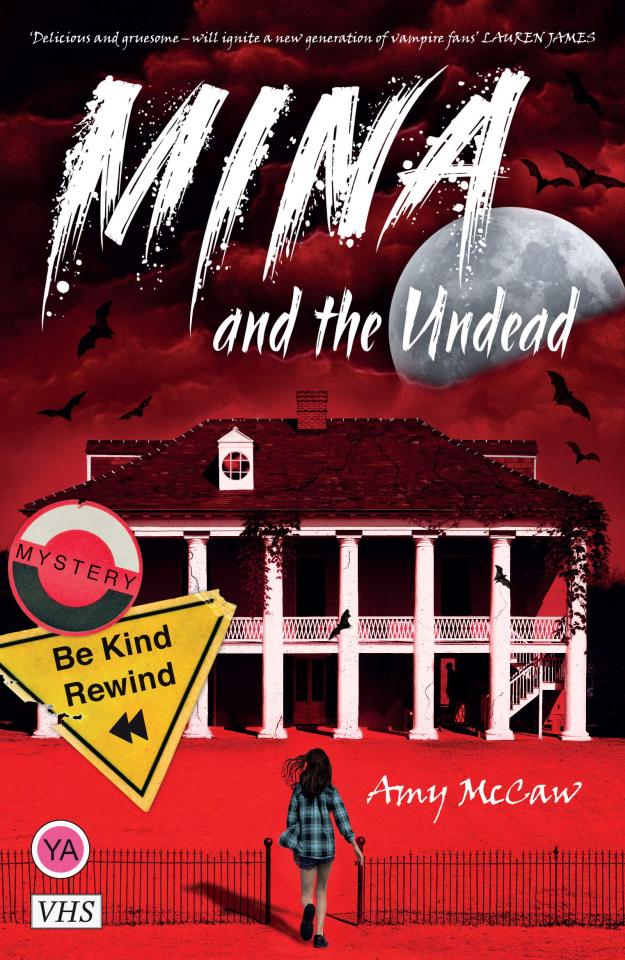
Horror fan Mina is staying with her sister Libby in New Orleans for the summer. Their mother recently left them and Mina is looking forward to spending time with her sister in a town riddled with spooky history. It gets even better when she gets a part time job at a haunted mansion attraction and meets the gorgeous Jared, Libby’s housemate. But the real horrors of New Orleans are yet to reveal themselves. I have been to New Orleans and this book definitely made me want to go back and hunt vampires! With a cast of loveable, easy to root for characters and a plot that keeps the twists coming, Mina and the Undead is a quick, chilling read for fans of 80s and 90s spooky classics. Incredibly absorbing, fantastically nostalgic and the perfect bloodthirsty YA horror book.
THRILLER: The Castaways by Lucy Clarke.

Sisters Lori and Erin came to Fiji together for a relaxing getaway but only Lori makes the connecting flight to a remote stretch off the mainland. That plane ends up disappearing and Erin flies back to London devastated to have lost her sister. Two years later, the pilot of the plane turns up alive in hospital and it appears that what actually happened on that missing flight is about to be revealed. This very chilling novel felt so realistic and I think that’s why it affected me as much as it did. The beautiful setting of Fiji against such a horrific plot provided the perfect juxtaposition. As well as being a story of sisterhood, The Castaways is a suspenseful thriller that keeps twisting and turning towards an unpredictable but satisfying end.
0 notes